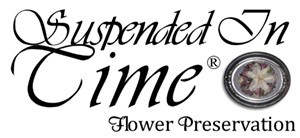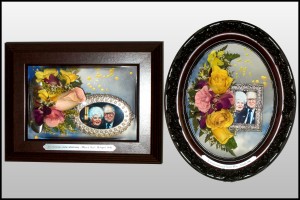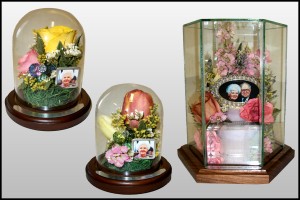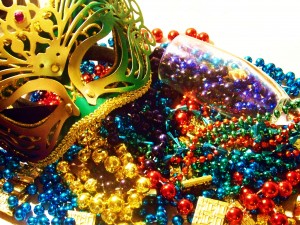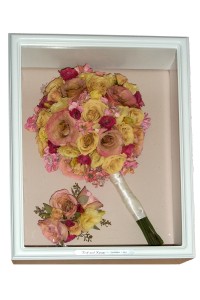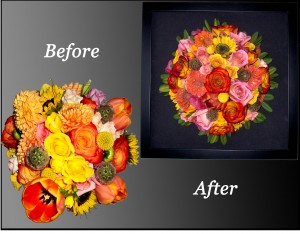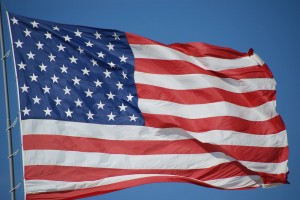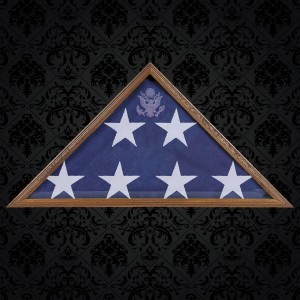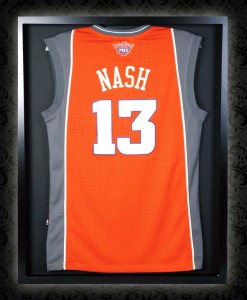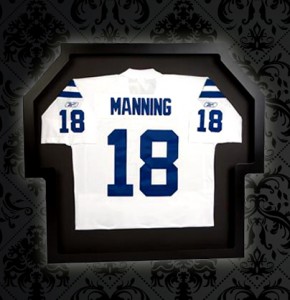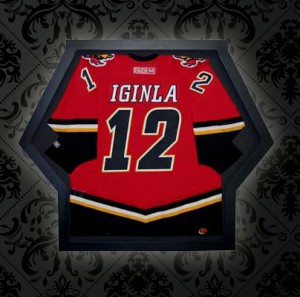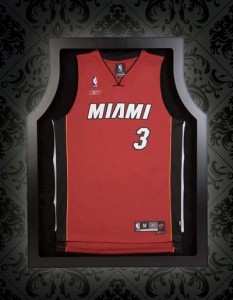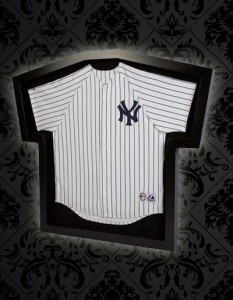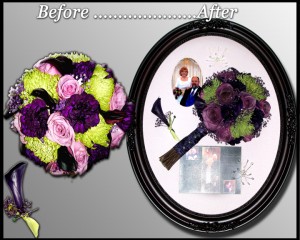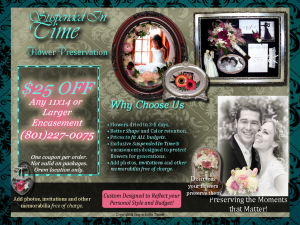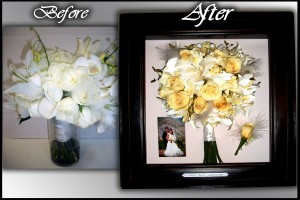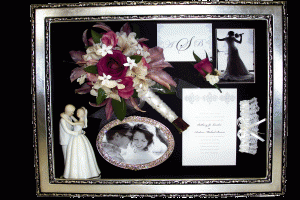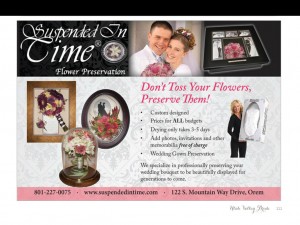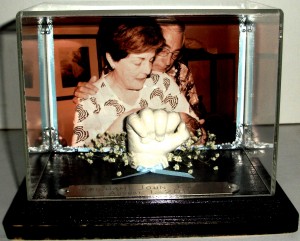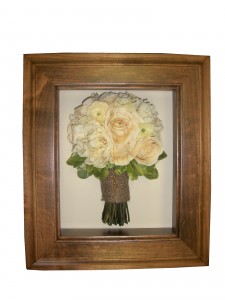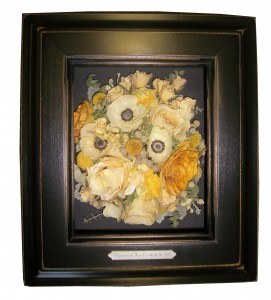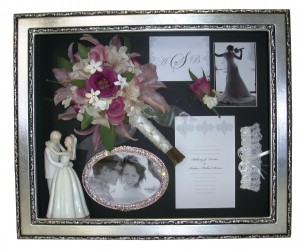Kay Mitchell said this upon picking up her floral encasement’s, “When I saw our beautiful memorials, I was so touched. It makes you always feel that they are near. Which they are!” Thank you for your wonderful comments. If you would like to learn where to get your flowers preserved or to find out how to become a dealer in your own town call (801) 227-0075.
Tag Archives: memorabilia
The Colors of Mardi Gras
The Colors of Mardi Gras
Mardi Gras decoration is all about the colors. Look at any picture of Mardi Gras floats and you’ll quickly see the theme. But why those colors? In 1872, the Krewe of Rex was founded. The organization was created to put on a spectacle for visiting Duke Alexei Alexandrovich of Russia and to entice tourists to visit a post-civil war New Orleans.
The krewe designed elaborate floats and quickly became a fixture in the Mardi Gras parade. An individual is chosen annually to represent the krewe as their Rex (the latin word for king) as the self proclaimed “King of Carnival”. The first reigning Rex chose the colors and assigned them meanings. Many of its traditions, not just the colors, were adapted by other krewes and are a traditional part of the Mardi Gras celebration to this day.
The colors and their meanings are as follows:
Purple – Justice
Gold – Power
Green – Faith
A Floral Tradition
Flowers are a long-standing tradition in Mardi Gras decoration. Almost every float has some variation of floral accent. And for those who can’t make it to New Orleans this year, flowers mark one of the easiest and most attractive ways to decorate for your party. The colors of Mardi Gras could not have been more perfectly chosen. Purples, greens and golds are prevalent in the floral world, and some of the most popular flowers come in those hues.
Spring Wedding’s Just Around the Corner
Bridget Fielding Wedding Bouquet
Wedding Flowers: Top 10 Wedding Flowers
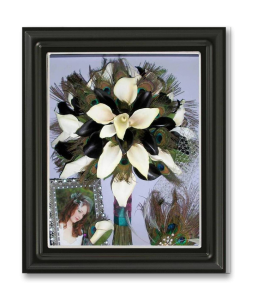 Having trouble picking your flowers from the
thousands of varieties available? Check out our
roundup of favorite wedding blossoms to help you
decide.
Having trouble picking your flowers from the
thousands of varieties available? Check out our
roundup of favorite wedding blossoms to help you
decide.
Picture yourself walking through a glorious garden with every flower at its peak. Which flowers would you pick for your wedding? The commonplace? The colorful? The rarest? Most fragrant? Unscented? Having trouble deciding from the thousands of varieties available? To help you narrow down your bouquet and centerpiece choices before you meet with your florist, we offer this overview of the top 10 most popular wedding flowers.
1. The Rose
Long considered a symbol of beauty and love, the rose figures into many myths and fairy tales. Romantic writers and poets have used the flower as a metaphor for emotion, beauty, passion, and true love throughout the ages. An all-star in the world of weddings, the rose is far from boring, particularly when it comes to color — the rose is available in solid colors and bicolor varieties, and there are striped roses and tipped roses as well. More than three thousand varieties of roses are grown commercially, many available year-round and that are surprisingly affordable. And though roses are associated with luxurious fragrance, not every rose is scented. Three main types are likely candidates for your wedding flowers: hybrid tea roses (the classic, uniformly-shaped commercial roses generally seen at your local florist), spray roses (a rose with five to 10 small heads on each stem and a “natural, garden-grown” look), and garden roses (expensive, old-fashioned varieties with bushy, open heads and delicious scents).
Learn more about roses — the quintessential wedding flower!
2. The Tulip
Although it’s most often associated with the Netherlands, this flower is actually a native of Persia. Representing “consuming love” and “happy years,” the tulip can be a meaningful wedding choice. The flowers are grown in a wide range of colors, including white and cream; pastels like pink, yellow, and peach; and vibrant hues like magenta, red, and purple. Available during much of the year, the most common tulips are very affordable, though rare varieties can be expensive. The versatile tulip can enhance both elegant wedding settings and more casual venues, and work well in almost any permutation — from bouquets to boutonnieres to table arrangements. Three main varieties are commonly used: Dutch tulips (typically seen at neighborhood florist shops and in gardens), French tulips (expensive and elegant, with extra-long stems and large tapered blooms), and parrot tulips (noted for their ruffled, striped petals in intense colors).
3. Calla Lily
Also known as the arum lily, this elegant, trumpet-shaped blossom originated in Africa and symbolizes “magnificent beauty” in the language of flowers. The calla lily’s distinctive form has been depicted in Art Nouveau and Art Deco works, in addition to twentieth-century photography. Two types are commonly available: a large-headed variety with a long, smooth stem and suitable for tall arrangements or presentation-style bouquets, and a miniature version ideal for nosegays and boutonnieres. Creamy ivory is the most popular color, but calla lilies also come in yellow, orange, mauve-pink, and dark purple.
4. Lily of the Valley
With bell-shape florets dangling from a thin stem, the lily of the valley is sometimes called “the ladder to heaven.” The fresh, perfumed scent from its tiny flowers is unmistakable. In Norse mythology, the flower is linked to Ostara, the goddess of springtime, and while most plentiful during this season, it remains available — and very expensive — most of the year. So while a fistful of lily of the valley might be your dream, a more affordable alternative may be to use just a few stems to infuse a bouquet or centerpiece with its wonderful fragrance. Most people know of the white variety, but lily of the valley also comes in a very rare rosy-pink.
5. Hydrangeas
With its big bushy head and intense shades of pink, blue, burgundy, and purple, it’s no wonder that the hydrangea represented “vanity” in the Victorian language of flowers. One of the most popular varieties changes in color as it grows from bubble-gum pink to sky blue, depending on the acid level of the soil. A stem or two of this moderately priced, scentless shrub flower helps fill out arrangements and bouquets, and a few sprigs make a charming boutonniere. You’ll find the hydrangea in white and shades of green, pink, burgundy, and blue.
6. The Peony
The peony has a large, full head, strong perfume, and bright color. But despite this outward showiness, the flower acquired the Victorian meaning “bashfulness.” Cultivated in Asia for more than a thousand years and developed further by the French, the peony is available in two main types, the herbaceous and the tree peony (the latter’s flowers do not last as long when cut). A bouquet made solely of peonies can be gorgeous; the flower can also be used to create beautiful centerpieces and arrangements. Grown in single- and double-flower styles, this expensive bloom is seasonally available from late spring to early summer but can be imported in the fall.
7. Ranunculus
Looking for a cost-effective alternative to roses or peonies? Try the lush, multi-petaled ranunculus, a relative of the buttercup. First seen by Westerners in the Far East around the thirteenth century, this mild-scented flower features several blossoms on a stem with fernlike foliage. To carry ranunculus is to tell your partner, in the Victorian language of flowers, “I am dazzled by your charms.” A natural for the bridal bouquet or bridesmaid nosegays, the ranunculus also makes a whimsical boutonniere and is available in many colors including white, yellow, orange, and pink.
8. Stephanotis
The Victorian meaning for this flower is “marital happiness,” making the dainty white Stephanotis an obvious choice for weddings. The star-shape, waxy florets actually grow on a flowering vine; each must be individually wired or placed onto a special holder before it can be arranged. A bouquet of stephanotis blossoms is one of the most traditional a bride can carry, and a stephanotis boutonniere is a classic choice for a formal wedding. Mildly scented, moderately priced, and available year-round.
9. Sweet Peas
The sweet pea, which signifies “lasting pleasure,” was first brought to England from Sicily in 1699, and the English have had a love affair with this delicate flower ever since. Its candy-like scent and ruffled blossoms make this an old-fashioned favorite in bouquets for the bride and her bridesmaids. The sweet pea’s many colors range from white to intense pinks and purples, and its scent can be strong and sweet.
10. The Gardenia
Surrounded by dark green, waxy leaves, the exquisite gardenia exudes a sultry, heavy scent. It was this intoxicating fragrance that captivated an English sea captain traveling through South Africa in 1754, prompting him to bring home one of the native plants as a souvenir. Gardenias are lovely tucked into a bouquet or floating in a low bowl as a centerpiece, and a single gardenia makes a wonderful scented corsage. But be gentle: the delicate, creamy ivory petals of this expensive flower can bruise easily. Large three- to four-inch blossoms, as well as a miniature variety, are available.
Adapted from The Knot Book of Wedding Flowers (Chronicle Books, 2002).
— The Knot
Read more: Wedding Flowers: Top 10 Wedding FlowersTheKnot.com – https://wedding.theknot.com/wedding-planning/wedding-flowers/articles/top-10-wedding-flowers.aspx#ixzz2Yi8LZPPj
https://wedding.theknot.com/wedding-planning/wedding-flowers/articles/top-10-wedding-flowers.aspx
HAVE A GREAT 4TH OF JULY!
Variously known as the Fourth of July and Independence Day, July 4th has been a federal holiday in the United States since 1941, but the tradition of Independence Day celebrations goes back to the 18th century and the American Revolution (1775-83). In June 1776, representatives of the 13 colonies then fighting in the revolutionary struggle weighed a resolution that would declare their independence from Great Britain. On July 2nd, the Continental Congress voted in favor of independence, and two days later its delegates adopted the Declaration of Independence, a historic document drafted by Thomas Jefferson. From 1776 until the present day, July 4th has been celebrated as the birth of American independence, with typical festivities ranging from fireworks, parades and concerts to more casual family gatherings and barbecues.
The Birth of American Independence
When the initial battles in the Revolutionary War broke out in April 1775, few colonists desired complete independence from Great Britain, and those who did were considered radical. By the middle of the following year, however, many more colonists had come to favor independence, thanks to growing hostility against Britain and the spread of revolutionary sentiments such as those expressed in Thomas Paine’s bestselling pamphlet “Common Sense,” published in early 1776. On June 7, when the Continental Congress met at the Pennsylvania State House (later Independence Hall) in Philadelphia, the Virginia delegate Richard Henry Lee introduced a motion calling for the colonies’ independence. Amid heated debate, Congress postponed the vote on Lee’s resolution, but appointed a five-man committee–including Thomas Jefferson of Virginia, John Adams of Massachusetts, Roger Sherman of Connecticut, Benjamin Franklin of Pennsylvania and Robert R. Livingston of New York–to draft a formal statement justifying the break with Great Britain.
On July 2nd, the Continental Congress voted in favor of Lee’s resolution for independence in a near-unanimous vote (the New York delegation abstained, but later voted affirmatively). On that day, John Adams wrote to his wife Abigail that July 2 “will be celebrated, by succeeding Generations, as the great anniversary Festival” and that the celebration should include “Pomp and Parade…Games, Sports, Guns, Bells, Bonfires and Illuminations from one End of this Continent to the other.” On July 4th, the Congress formally adopted the Declaration of Independence, which had been written largely by Jefferson. Though the vote for actual independence took place on July 2nd, from then on the 4th became the day that was celebrated as the birth of American independence.
Early Fourth of July Celebrations
In the pre-Revolutionary years, colonists had held annual celebrations of the king’s birthday, which traditionally included the ringing of bells, bonfires, processions and speechmaking. By contrast, during the summer of 1776 some colonists celebrated the birth of independence by holding mock funerals for King George III, as a way of symbolizing the end of the monarchy’s hold on America and the triumph of liberty. Festivities including concerts, bonfires, parades and the firing of cannons and muskets usually accompanied the first public readings of the Declaration of Independence, beginning immediately after its adoption. Philadelphia held the first annual commemoration of independence on July 4, 1777, while Congress was still occupied with the ongoing war. George Washington issued double rations of rum to all his soldiers to mark the anniversary of independence in 1778, and in 1781, several months before the key American victory at Yorktown, Massachusetts became the first state to make July 4th an official state holiday.
After the Revolutionary War, Americans continued to commemorate Independence Day every year, in celebrations that allowed the new nation’s emerging political leaders to address citizens and create a feeling of unity. By the last decade of the 18th century, the two major political parties–Federalists and Democratic-Republicans–that had arisen began holding separate Independence Day celebrations in many large cities.
July 4th Becomes A National Holiday
The tradition of patriotic celebration became even more widespread after the War of 1812, in which the United States again faced Great Britain. In 1870, the U.S. Congress made July 4th a federal holiday; in 1941, the provision was expanded to grant a paid holiday to all federal employees. Over the years, the political importance of the holiday would decline, but Independence Day remained an important national holiday and a symbol of patriotism.
Falling in mid-summer, the Fourth of July has since the late 19th century become a major focus of leisure activities and a common occasion for family get-togethers, often involving fireworks and outdoor barbecues. The most common symbol of the holiday is the American flag, and a common musical accompaniment is “The Star-Spangled Banner,” the national anthem of the United States.
Don’t Forget Father’s Day!
Father’s Day is right around the corner. We at Suspended In Time® love Dad’s and want to thank them for the great men that they are!!
We have the perfect gift for your dad or other special man in your life… Collector’s Shadowboxes. All Collector’s Shadowboxes are now 25% off until Father’s Day. Bring your collector’s memorabilia in today and let us help you design the perfect box! Since these are custom boxes it can take up to 4 weeks for us to create your masterpiece so visit us today.
Restore Your Old Bouquet!!!
Brides Response When She Saw her Bouquet Restored:
“WOW! Seven years after our wedding my bridal bouquet was crumbled, dusty and sad! Now it looks as good as the day of our wedding. My flowers were the highlight of my wedding day and now I see them and smile everyday Thanks!”
~Jessica Benson
Kimikae Jones Bridal Bouquet Testimonial
Recently Kimikae Jones got her wedding bouquet preserved after her special day. When she came to pick it up at Suspended In Time Inc. (R) she was ecstatic and this is what she had to say when she saw it for the first time: “I’m so excited to have found Suspended In Time! When I saw my display, I got goose bumps and tears came to my eyes! They did an amazing job with the display and the flowers looked incredible! Thank you Suspended In Time for preserving my wedding memories so perfectly!!!” Kimikae, also had her wedding dress preserved through us and she was just as excited over how beautifully it was displayed. —We are happy that Kimikae was overjoyed and hope that we can bring that same happiness to many other brides soon.
History Behind the Wedding Ring
Till twentieth century, wedding rings were associated with women only. It was in the twentieth century that men started wearing wedding rings as well. The trend started during the World War II, when most of the men were separated from their wives for a lengthy duration. It was then they started wearing wedding bands, which served as a symbol of their marriage. They took it as a reminder of their wives, who were waiting for them to return. It was a gesture of love at that time, which has sustained as a practice till date.
https://lifestyle.iloveindia.com/lounge/history-of-wedding-ring-3552.html
Karli White Bridal Bouquet-Before and After Flower Preservation
Suspended In Time Tips for Brides
See what we can create so you can remember your special day for years to come! Check out number 9 on the list and see what we can do for you! Utah Valley Bride included us in the 2013 Bridal Magazine in the section titled “It’s The Little Things”–“10 Head-To-Toe Tips For Your Dolled-Up Day!
Diane Karren and Her Little Brigham’s Memory Encasement
Diane Karren,
Says, “I was more than pleased”, when talking about an encasement she had done at Suspended In Time. The story behind her encasement is that of her little Brigham who passed away. She says, “Our little Brigham who passed away last August had a beautiful, perfect little body. We were able to have a mold done of his little hands and feet. “Suspended in Time” created a beautiful memory for us to always remember our sweet baby.”
Shadowboxes!
Do you want to dry your wedding bouquet but don’t want it to get dusty or damaged. Bring it in to Suspended In Time(R)! You can chose from hundreds of different styles of encasements to put your preserved bouquet in that will keep it protected for years. Some of our most popular encasements are our rustic pine shadowboxes. They come in all different sizes and several different colors such as black, white, green, rosewood, walnut and oak. We also have our new modern shadowboxes that have a flatter frame and give off a more modern look. Because of all the room you have in a shadowbox, you can even add other memorabilia like a garter, boutonniere or even your wedding cake knives. Come check out our showroom! Your sure to find the perfect frame that with match you flowers beautifully.
